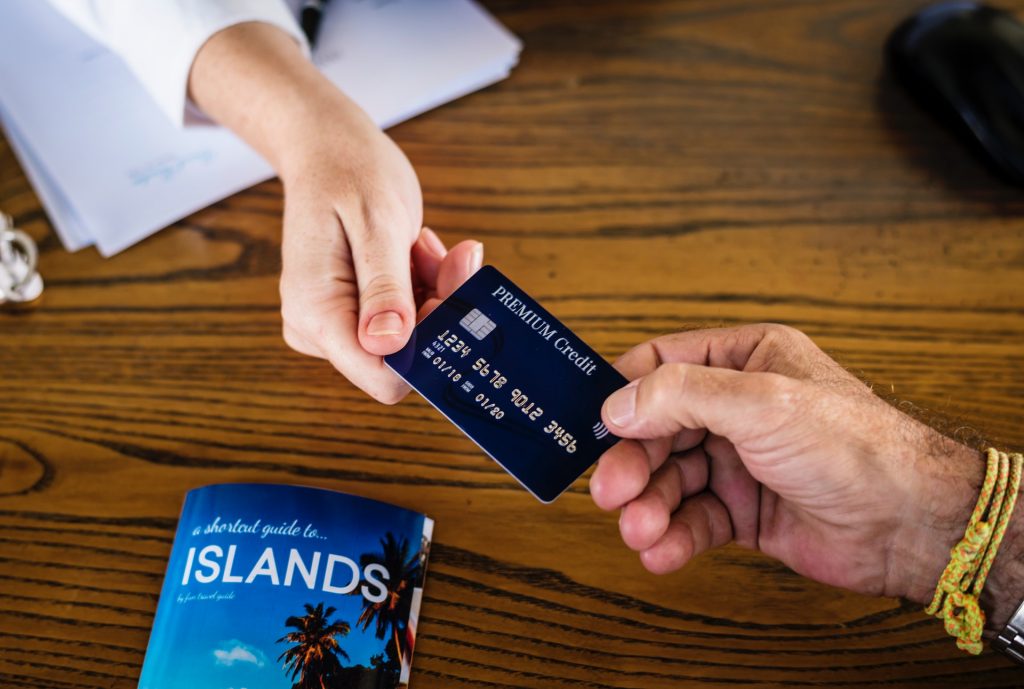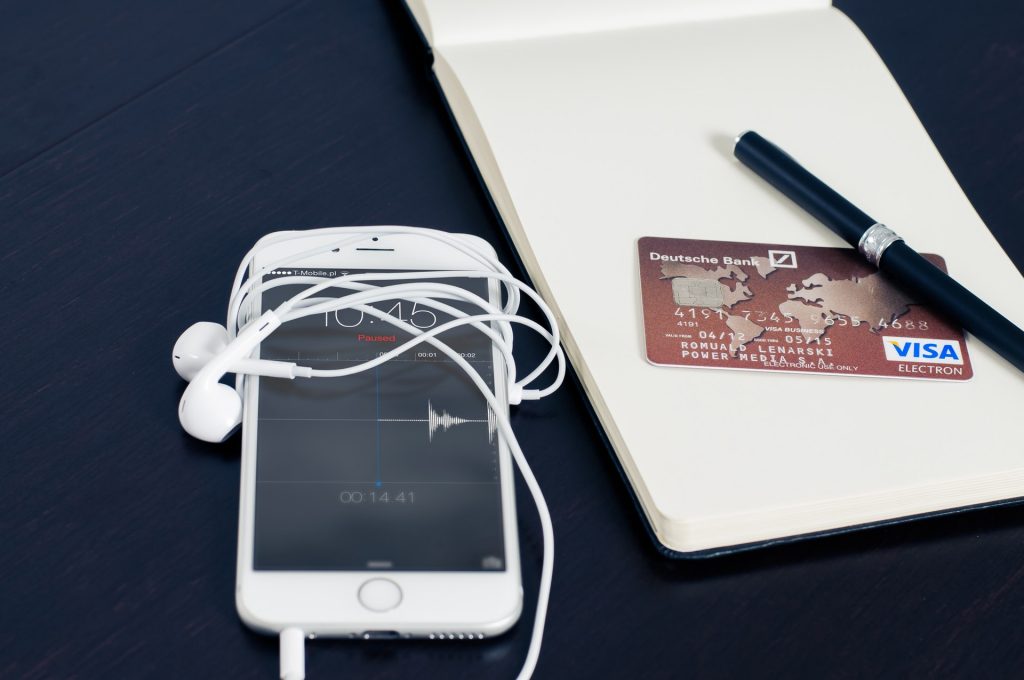A recent study found that credit cards are catching up to debit cards as the preferred payment option for consumers. As this shift towards credit cards continues, business owners need to be aware of (and utilize) the changing technology to remain competitive and to keep their customers’ financial details safe. As a business owner, the following information will provide the fundamental information you need to know about chip cards.
What are chip credit cards?
A chip card is also known as:
A chip-and-pin card.
A smart card.
A chip-and-signature card.
A chip credit card is the normal-size plastic card that has an implanted microchip as well as the usual magnetic stripe. The purpose of the chip is to encrypt data to boost security when customers buy items from stores or withdraw money from ATMs. Not every card reader has the functionality to work with chip cards.
MasterCard, Europay and Visa (EMV) have joint together to update the technology in chip cards so this can become the global standard for both debit and credit card transactions. This initiative has been undertaken to enable MasterCard and Visa cards to be accepted by businesses worldwide while sticking to the same high standards.
EMV terminals are chip-enabled and send information from where a purchase is made to the merchant’s site. Point of sales (POS) and ATMs that have chip technology are growing in popularity both in the U.S and around the world.
Before the development of chip cards, all cards used the magnetic stripe for verification of purchases.
The new chip cards represent an important upgrade in technology compared to the magnetic stripe credit cards. The chip in the card now holds the credit card information that was previously contained in the magnetic stripe. Chip cards offer increased security against fraud with the use of a personal identification number (PIN) to further verify that the user of the card is the owner of the card. Chip and PIN is one of two verification methods that can be used. Rather than signing a receipt for identification, users enter their PIN, making it harder to duplicate the card. Chip and signature, on the other hand, requires a signature to verify the consumer’s identity.
How do chip and pin credit cards work?
Chip cards contain microchips that behave like miniature computers. These chips record and store information and can also process data. The chip card is regarded as being very secure because cryptography is used to protect information when communicating with card readers.
Most chip cards are used in card readers. After the customer enters their chip card, they are prompted to enter their four-digit PIN or they can sign a receipt. Another way that customers can pay with chip cards is by using contactless terminals. During a contactless transaction, the customer will hover their chip card over the terminal to trigger the chip. Contactless payments do not require the customer to enter their PIN or sign a receipt. They simply touch the card on the terminal and the transaction is complete.
One of the most significant changes in chip and PIN cards is that card owners do not have to be present at the time of the purchase, making online payments even easier. Consumers can enter their information from their chip and PIN card online or over the phone and the chip allows them to be automatically authorized. Most consumers are familiar with Card Verification Value (CVV), which is a three or four digit code on each card. CVVs are not encoded on the card, which means that the number is known only to the card holder.
EMV liability shift
Major card issuers, like American Express, Visa and Discover stated that, if businesses did not adopt chip card technology by October 2015, they would be liable for counterfeit fraud. However, this requirement was not mandatory for businesses. This meant that many businesses refused to upgrade their technology to accept chip cards. In fact, 56% of survey respondents who were small business owners, did not accept chip cards.
Unfortunately, some businesses did not know about this shift in liability and others were unaware of how to go about making the necessary changes. Some businesses did not have a way of determining how much fraudulent transactions would cost them. This is because, in the past, card issuers were responsible for the costs of fraudulent transactions.
Benefits of accepting chip cards
- No internet connection required
An advantage for your business of accepting chip cards is that you do not need to be connected to the internet to process a transaction. Previously, with the magnetic stripe, the card reader would have to contact the credit card company for authorization. Chip card technology is beneficial if your business has a slow internet connection or you take part in events, like market fairs. You will be able to accept payments whether or not you have an internet connection because the chip collects payments and authorizes them when you are back online.
- Improves security
Research and data have shown that chip cards are more effective at protecting your customers’ information than traditional magnetic stripe cards. According to Visa, businesses that have upgraded to chip technology have experienced an 80% drop in counterfeit fraud dollars. Additionally, businesses that do not accept chip cards put themselves at risk because they could be liable for certain types of fraudulent transactions. This shift in liability is the banks attempt to help accelerate the nationwide adoption of chip cards and avoid fraud. It is important to know that, if a customer has a chip card and you do not have a terminal that is designed for chip cards, the cost of any fraudulent transactions will be your responsibility.
- Enhances customer experience
Given that the results of a survey found that 78% of consumers were happy with their chip cards, it’s recommended that your business takes action to keep your customers satisfied. The perception among consumers is that chip cards protect their data and make transactions more secure. As a result, they have come to expect that businesses they deal with will accommodate this new form of payment. Allowing your customers to use chip cards in your store will give them confidence that your business cares about their data and has taken simple steps to prevent their information being compromised.
- Remains competitive
As technological changes begin to pick up pace, it can be difficult to know which ones to adopt. There are some changes in technology that your business can potentially delay. However, this same reasoning may not apply to chip cards. If your competitors offer chip-enabled payment options, it is likely that your customers would choose to shop with them. Your customers want to know that keeping their information safe is a top priority for you and switching to EMV-based technology is one effective way to demonstrate this.
- Saves money
From October 2015, there was an EMV liability shift, which determined that businesses without chip-enabled technology would be liable for counterfeit card fraud that was committed in-store. If you have not adopted EMV-enabled technology and fraudulent card transactions take place in your store, you will be liable to pay any penalty associated with this fraud. Unfortunately, like any target of theft, word could soon spread that your business processes counterfeit cards. Consequently, as the number of fraudulent card purchases increases, so will your costs. Failing to adopt EMV-enabled technology could have a devastating effect on your bottom line.
A disadvantage of accepting chip cards
- Additional expense
Switching to chip cards could be very expensive for your business. It is estimated that preparing your business to accept chip cards can cost between $500 and $1000 if you own a small business. This can be a big disadvantage for companies that are experiencing issues with their cash flow. When EMV technology was first introduced, businesses believed that upgrading their software to accept chip cards would be extremely costly. However, with the emergence of POS systems, like Square, businesses can accept chip cards for a fraction of what it would have cost traditionally. For example, Square’s card reader is only $49 dollars and also accepts new forms of payments, such as Apple Pay.
How to get your business prepared to accept chip cards
Ideally, your business should already be equipped to accept chip cards. This is because, every day that you do not use EMV technology, you risk being liable for fraudulent card payments in your store. However, in 2017, only 52% of businesses were ready to process chip cards. If you have not implemented systems to accept chip cards, the following steps will help you to make the transition:
- Review your POS system
If you have a legacy POS system, it is likely that your software will not automatically get updated. Find out if you need to make changes to your POS’s hardware or software. Alternatively, you could get a brand new EMV-enabled card terminal.
- Assess your payment technology
You should take the opportunity to rethink how you accept payments in your business. You should review different POS providers to find out if they will be more suitable for your needs. Where your business uses an older POS, this could be your chance to make changes to newer technology that can work with smartphones, iPads or tablets.
- Be aware of security
Although the statistics show that businesses that use EMV-enabled technology experience a decrease in fraudulent activity, it is important to note that no technology can totally eliminate the risk of fraud. Continue to be vigilant about customer transactions, especially if you have an online business. Also, discuss additional security measures that payment providers are taking to ensure that your customers’ data will be protected.
- Train employees
Introducing new technology can be daunting for some employees. After you have chosen and installed your EMV-compliant system, you will need to implement a training program to ensure that your employees are able to use it efficiently.
- Remember customers without chip cards
New EMV-enabled terminals will still be able to accept cards without the chip. If you have switched to EMV technology, you will still be able to swipe customers’ cards with the traditional magnetic stripe. If a customer commits a fraudulent transaction with a magnetic stripe card, you will not be liable for the charges if you have upgraded to an EMV-enabled system.
Your business should make plans to accept chip cards as soon as possible because this is the direction that payments are moving in on a global scale. Upgrading to EMV-enabled technology also keeps your business compliant and reduces the likelihood that you will have to pay the costs associated with fraudulent transactions.
With payment processors and POSs, like PayPal, Stripe and Square, cost is no longer a barrier to implementing EMV-enabled technology in your business. Additionally, customers are now increasingly expecting businesses to accept chip cards since most of them have been upgraded to these types of debit and credit cards.
After you have ensured that you have become EMV-compliant, make sure you choose an employee scheduling software that keeps you compliant with the relevant labor laws.
Deputy not only integrates with the leading POS systems, it also helps to keep your business compliant with various legislation.
Sign-up for a free trial to find out why Deputy is trusted by over 90,000 businesses, like Nike and Amazon, to schedule their employees with efficiency and with ease.






